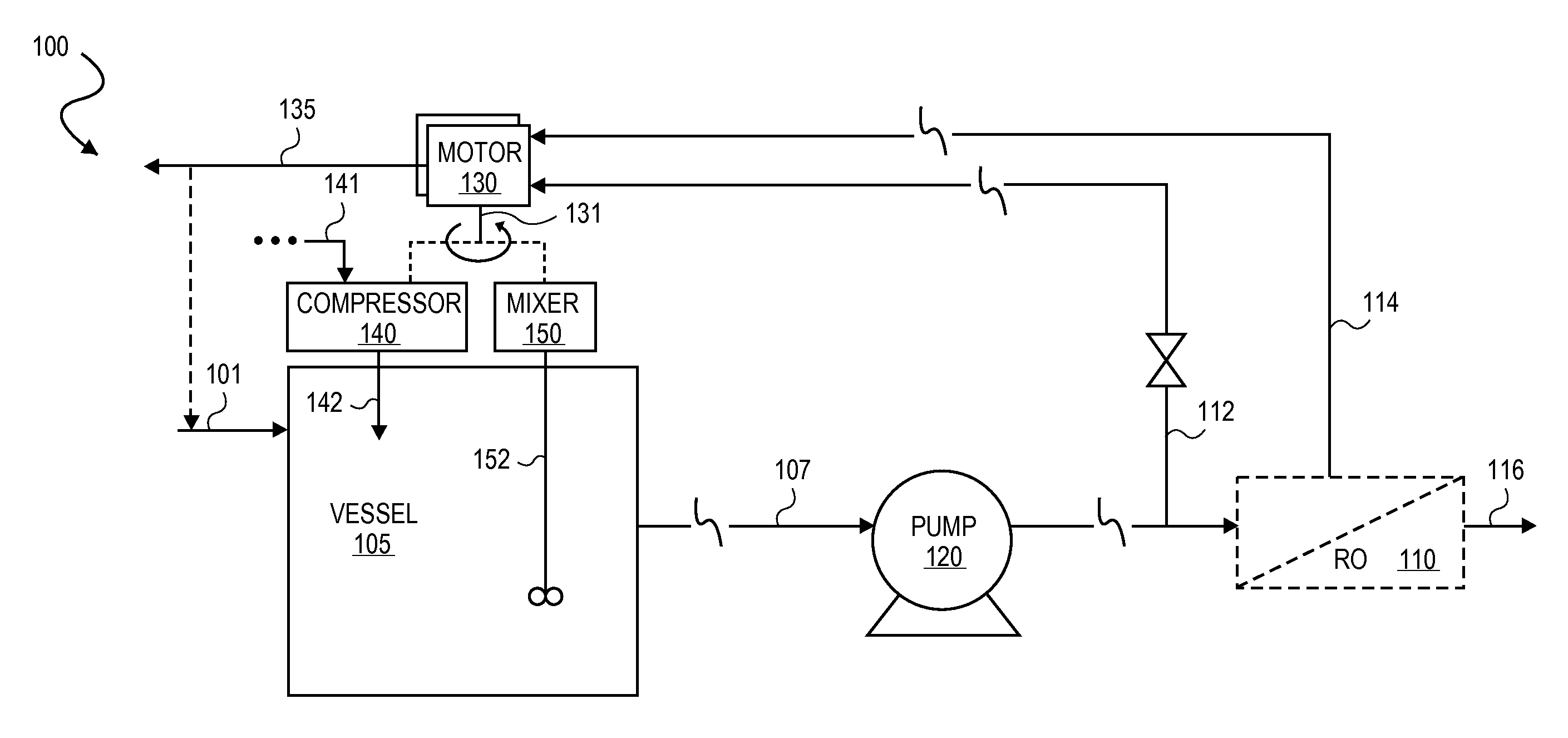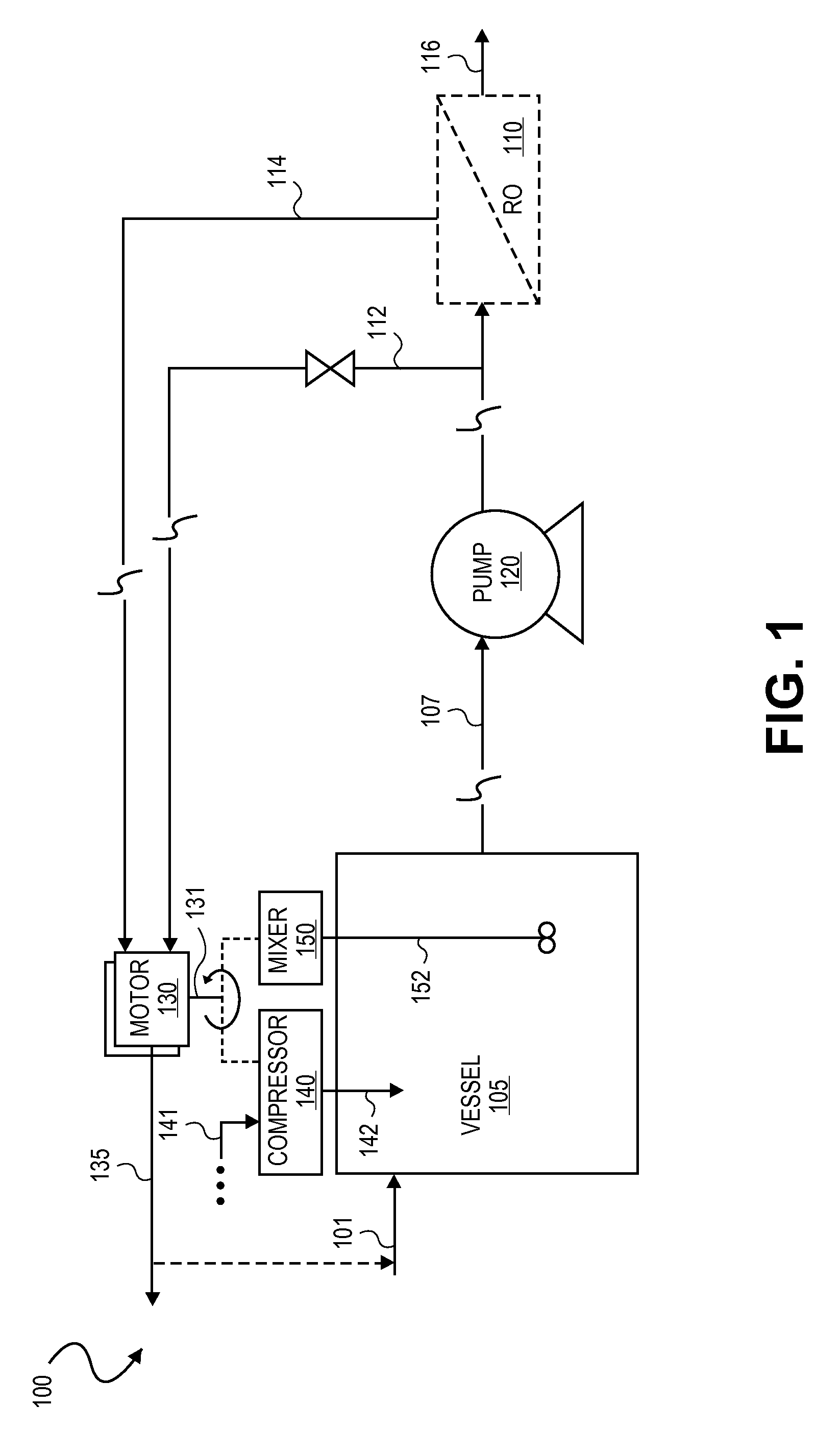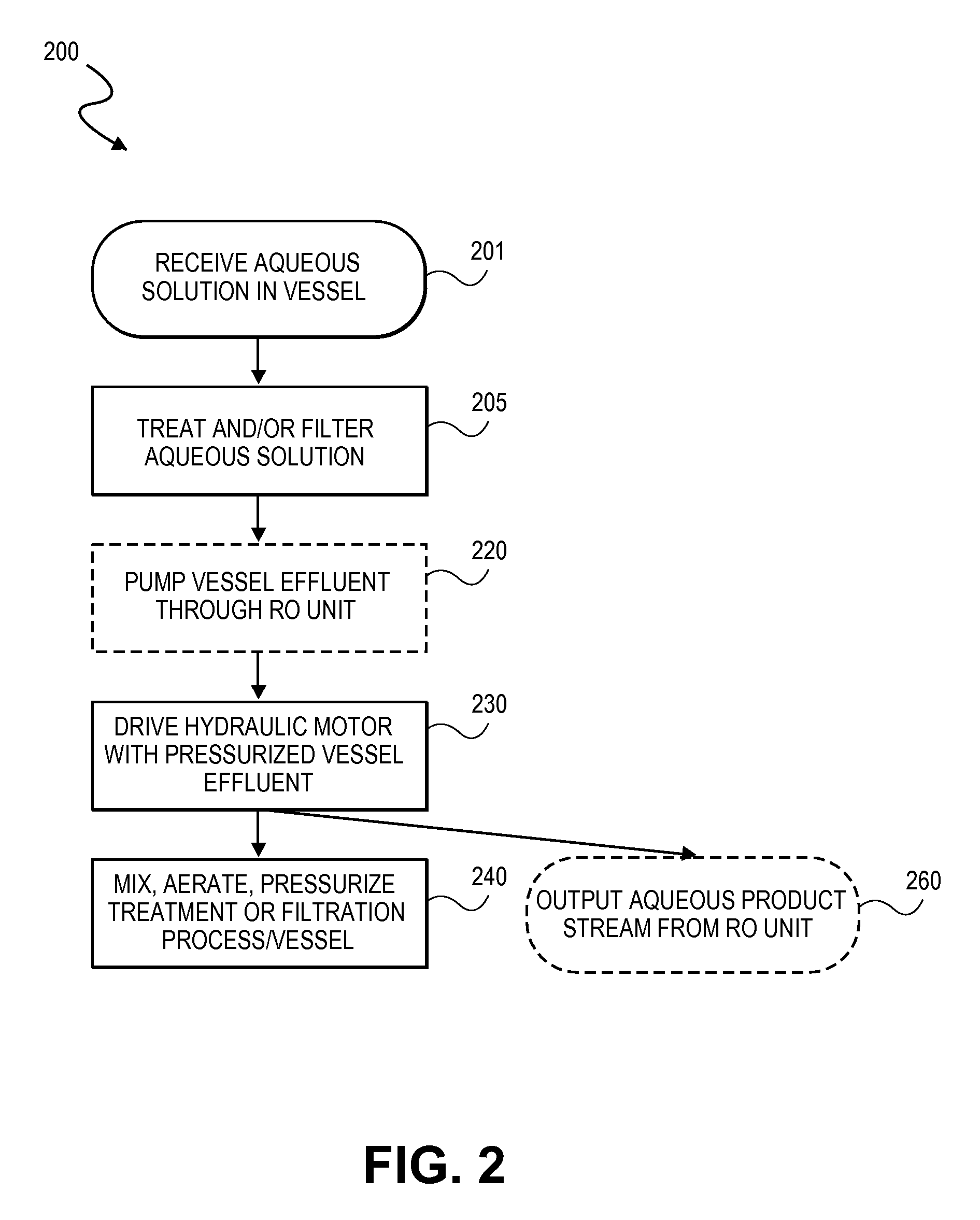Integrated membrane system for distributed water treatment
a technology of integrated membranes and water treatment, which is applied in the direction of water/sewage treatment by osmosis/dialysis, water/sewage treatment by substance addition, water/sewage treatment by ion exchange, etc. it can solve the problems of high treatment cost, insufficient effluent produced by biological treatment and microfiltration for significant number of uses, and high treatment cost. , to achieve the effect of reducing the number of uses, and reducing the number of was
- Summary
- Abstract
- Description
- Claims
- Application Information
AI Technical Summary
Benefits of technology
Problems solved by technology
Method used
Image
Examples
Embodiment Construction
[0026]Described herein are integrated membrane water treatment systems and water treatment methods which may be performed by such systems. In the following description, numerous specific details are set forth, such as exemplary treatment and filtration apparatuses to describe embodiments of the present invention. However, it will be apparent to one skilled in the art that embodiments of the present invention may be practiced without such specific details. In other instances, well-known aspects, such as specific biological treatment techniques, solids separation techniques, etc. and associated hardware, are not described in detail to avoid unnecessarily obscuring embodiments of the present invention.
[0027]Reference throughout this specification to “an embodiment” means that a particular system component or operative sequence described in connection with the embodiment is included in at least one embodiment of the invention. Thus, use of the phrase “in an embodiment” in various places...
PUM
| Property | Measurement | Unit |
|---|---|---|
| retention time | aaaaa | aaaaa |
| retention time | aaaaa | aaaaa |
| retention time | aaaaa | aaaaa |
Abstract
Description
Claims
Application Information
 Login to View More
Login to View More - R&D
- Intellectual Property
- Life Sciences
- Materials
- Tech Scout
- Unparalleled Data Quality
- Higher Quality Content
- 60% Fewer Hallucinations
Browse by: Latest US Patents, China's latest patents, Technical Efficacy Thesaurus, Application Domain, Technology Topic, Popular Technical Reports.
© 2025 PatSnap. All rights reserved.Legal|Privacy policy|Modern Slavery Act Transparency Statement|Sitemap|About US| Contact US: help@patsnap.com



